13 Ways to Fake Natural Light When You Really Don't Have It

The term “natural lighting” is used frequently, but it can involve a lot more than how much sun a room gets. It’s a design technique that involves using natural light sources as efficiently as possible to limit the use of artificial lighting, which will save energy in the process.
Unfortunately, we can’t all have floor-to-ceiling windows and some rooms bring in natural light more effectively than others. But no matter what direction your apartment is facing or how few windows your living room has, there are plenty of ways to fake natural lighting to create a cozy, warm ambiance. The good news is, you don’t have to install a skylight to do it—some simple tips and tricks can make a world of difference in a matter of minutes.

1. Make any and all windows focal points in each room.
This one just requires a bit of rearranging to maximize any light you have. Ensuring that a window is the first thing the eye goes to when walking into the room will make it seem like there is more natural light than actually exists. Here, muralist Champagne adorns her living room’s major window with a fresh coat of yellow paint and matching chaise to make the room feel brighter than it is in this Hollywood rental.
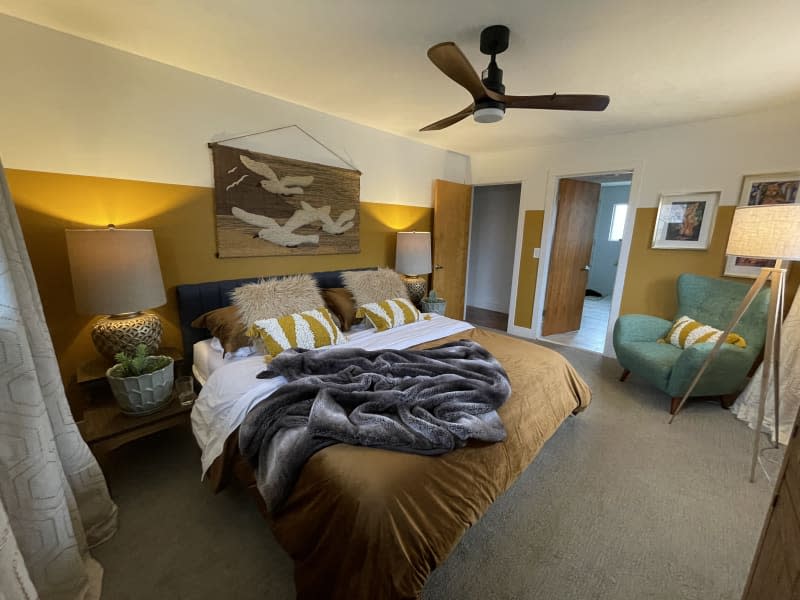
2. Keep your lamp shades simple.
While we love a custom patterned lampshade as much as the next design aficionado, it’s not exactly the best choice for those low on natural light. Bright white lampshades will make your lighting more effective and give the space an airy feel, as shown in the bedroom of this Idaho home. Take your fabric to that heirloom armchair instead!

3. Stock up on mirrors.
This is a designer-favorite hack for brightening up a room and making it appear larger. Adding mirrors to the wall across from your natural light-receiving windows will help bounce the light around the space. Take it one step further and opt for furniture and decor pieces with mirrored surfaces, like this mirrored accent table from Pottery Barn, to maximize the amount of natural light being reflected in your space.
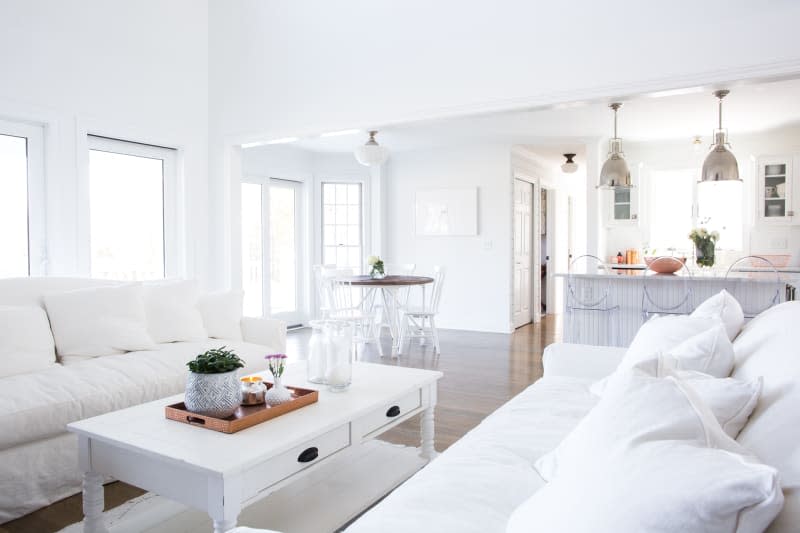
4. Avoid decorating with dark tones.
Dark tones absorb more heat and light than lighter-colored ones, so filling an already dim space with moody furnishings and textiles will make it seem even darker. Consider painting a windowless room in a breezy hue like bright white or eggshell that will reflect more light and make it more inviting.
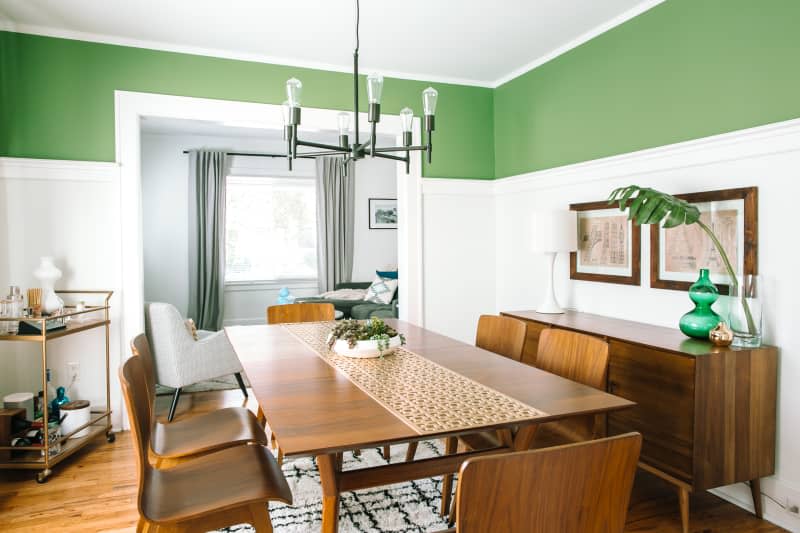
5. Gloss up your surfaces.
A little gloss goes a long way when faking natural light at home. Add a fresh coat of lacquered paint to your walls, ceiling, trim, or floors (if possible) to help bounce the light you do have around the room. You could also invest in decor items with glossy or metallic finishes to give the impression you have more light in your home than you really do.

6. Pick bulbs that simulate sunlight.
Artificial lighting is still essential in any room, especially ones that lack a lot of the natural stuff. Add full-spectrum light bulbs to the light fixtures in poorly lit rooms, as they’re designed to simulate daylight. This is an instant hack for brightening up your home with soft, warm artificial light.
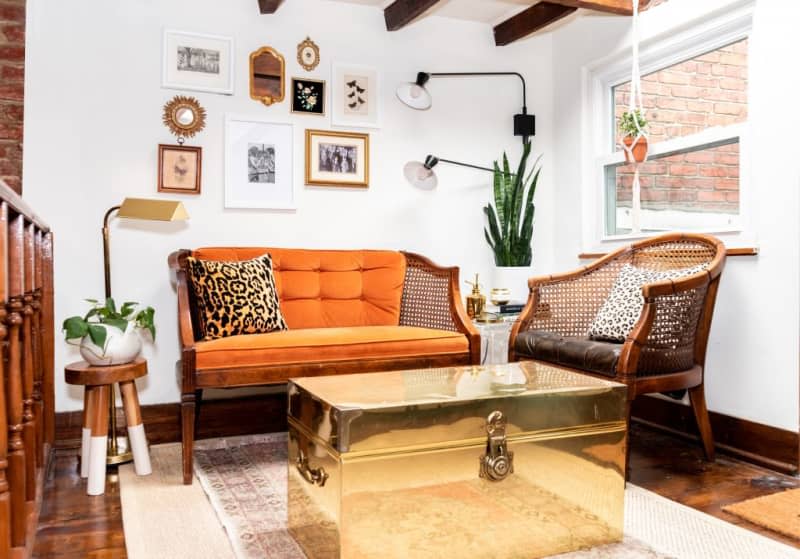
7. Add more lamps to the mix.
This one sounds so simple, but it’s easy to forget: You can always brighten up a room by utilizing additional table and floor lamps (and sconces, too, if you can hire an electrician to further wire your walls). Fill an empty corner with a large, torchiere-style floor lamp; these designs are great for dim areas, since they can direct light upwards towards the ceiling. Introduce a small LED lamp on a coffee table, mantel, or kitchen counter. The best and brightest rooms always have multiple sources of light, so don’t be afraid to layer in more lamps where you can.

8. Pile on the plants.
When all else fails, you can always count on houseplants to help you compensate for a lack of natural light in a room. Bring a few low light-tolerant plants, like ferns or spider plants, into a room with little-to-no-natural light to usher in some ethereal vibes and keep the air clean. Win-win.
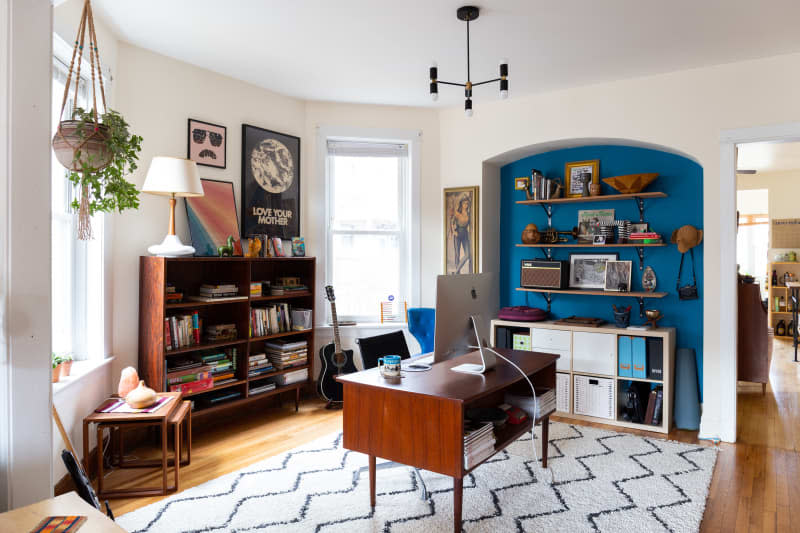
9. Keep the windows you do have unobstructed.
We’re all for putting things in front of windows—beds, shelves, chairs—when you’re in a tight spot. But if you don’t get a lot of natural light to begin with, then it’s best to make sure your windows are, for the most part, unobstructed. You might even consider taking blinds and heavy curtains off of your windows in rooms where you don’t need as much privacy. Hanging a plant in your window can help make the window look more elegant, and the right plants can help with the lack of light problem, as mentioned above.

10. While you’re at it, clean your windows, too.
You’d probably be surprised at how much dirt and grime can build up on window glass, both on the inside and outside of casements. You might not be able to tackle the exterior of your windows, but you can certainly spray down the interiors to remove smudges and stains that could be obstructing light.

11. Be strategic about furniture finishes.
Target shiny lacquered, clear glass, and see-through acrylic pieces when shopping for your next piece of furniture. Not only do these materials feel visually light, but they also allow sun to stream right through—or off of—them. These types of furnishings will keep the overall look of your room sunny and bright, and decorative accessories in these finishes will also help your cause.

12. Go big with art.
A large painting or print can break up blank wall space, and if you’re able to frame it, this adds another semi-reflective finish to your walls. Naturally, a piece that is lighter and brighter will help you fake natural light better than something dark. A white frame is probably your best bet, too, especially if you already have white walls.
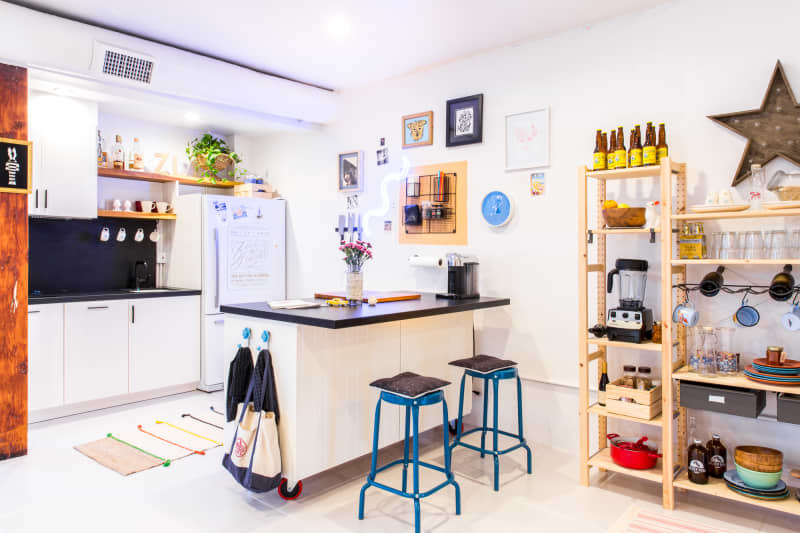
13. Paint your floors white.
This one isn’t for everyone or every aesthetic, but white floors can throw what light you do get around your room effectively, which can create an optical illusion of increased brightness and openness. If you can’t coat your floors with a snowy paint, try a light colored area rug to get a similar effect.

